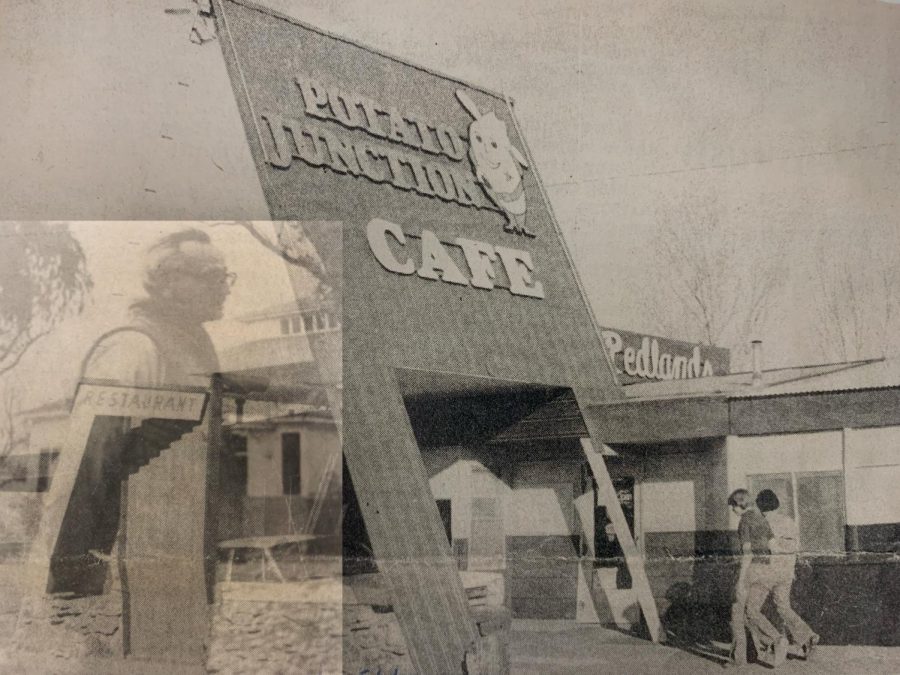Orville Bruce Jones – A Loved Local Hero
March 18, 2022
Orville Bruce Jones, my great grandfather, and a hero to many. He was a great deal in my life and to those around him who were also concerned in keeping the Mesa County community involved. Bruce was born in Hugoton, Kansas on May 9, 1927, in the Hugoton Jailhouse. His father was the sheriff and their family lived in the home attached to the jail.
In his adolescence, Bruce was one of the first children near his hometown to receive a skin graft at the Crippled Children’s Hospital in Kansas City due to a fire accident when he was a kid. This accident led to skin grafts all up his lower legs, and he was hospitalized for over a year.
Bruce was resilient and went on to fight in World War II when he was merely 18, going through Stevedore training as a Seabee. The Seabees (navy construction battalion) would build the permanent or temporary infrastructure at the U.S. military locations. Since he got his first, Bruce was always wearing one of his World War II Veteran hats to promote how far we have come and his hard work to ensure peace.
When the war was over, he was stationed in Guam where he took many pictures. Bruce was a lover of all things technology: he kept almost every photo and video he took including ones of himself, the scenery of all of his travels, and the people around him.
Bruce moved back to Kansas and then decided to enroll in Panhandle State University where he met his wife Patricia Green. They married in 1951 in Raton, New Mexico then moved back to Hugoton, Kansas shortly after.
During the ’60s, Bruce worked for Northern Natural Gas in which he had tried to hire a woman for a certain position and got “in trouble”. He didn’t understand the divide and wrote an essay explaining his thoughts about how women are the “lost group” in the workforce. He explained in his essay how those in the “lost group” are “(1) the most ambitious, (2) the strongest competitors, (3) have enough faith in themselves and what they can do that they are not afraid to move to new situations, and (4) generally the hardest workers and greatest personal risk-takers.” Bruce believed that even those who don’t have the certifications should be allowed to have good jobs because those without these certifications often had more genuine experience and better performance in their fields.
In 1968, Bruce and Pat Jones moved to Grand Junction where they bought the Redlands Drive-In, there they sold ice cream, shakes, sandwiches, etc. After nine years of running the drive-in, they converted the building into Potato Junction, a restaurant that specialized in potato dishes while also serving burgers and other meals. The restaurant’s mascot, Sheriff Spudley, embodied a Wild West theme.
The menu for Potato Junction’s was styled as a newspaper called the “Potato Advocate,” on which Bruce would add short pieces of advice for the adults to read on the front and games for kids on the back. Their sandwiches consisted of “the Bad Guy” and “the Best Guy” with the choice of a side of fries. The burgers were named the “Real Good Guy burger” and the “Good Guy burger.” The menu also featured a BLT and fish sandwich. However, the best-known restaurant dish was the “Spudley Special”, a baked potato “topped with seasoned beef, gravy, cheese, green peppers, whipped butter or sour cream, and chives” as described in an article advertising the valley’s new restaurant in 1977. This meal was very popular because it was cheap yet delicious.
Dan Crabtree, former Redlands Drive-In employee remembered how they, “‘grew fresh tomatoes on part of the property and served them on hamburgers and salad. Bruce was always trying to find and fill a new niche… He hired a lot of high school and college kids. Gave them a lot of responsibility. He and his wife, Pat, were great mentors.’”
Bruce and Pat sold their restaurant in 1979 and started their own real estate business. It was called Reality Junction and Bruce was their broker while also a member of the Independent Brokers.
Bruce was always trying to solve problems. One of the actions that he lead was the “Save the Barn” movement done in 1978. The Barn was formally known as the Lincoln Park Auditorium and sat next to Stocker Stadium. An article in “The Daily Sentinel” written by Alice Wright explains how Bruce thought “[t]he Barn’s casual atmosphere was better suited to the informal activities of the city’s youth groups than the shiny new Two Rivers Plaza downtown.” Bruce wanted there to be a place for kids to hang out after school and during the summers that would benefit them in more ways than a shopping plaza ever could. Through his and his committee’s efforts, they managed to save the Barn and keep it operating even to this day.
O. Bruce was an active member in Mesa county before and after his retirement. He was one of the founding members of the Church of Nativity on the Redlands and was active in the Fellowship of Cooperating Christians. Bruce was a man who loved God and lived his religion through acts of kindness.
In his later years, after retiring, Bruce could be found sitting with his wife in the Fruita McDonald’s enjoying what he said were the best ice cream cones, waving at cars as he picked up litter, or walking to a local park with his family with bamboo sticks he grew himself. Bruce’s daily goal was to bring someone joy, even if it was just a wave as they drove by or a story told to a little kid.


Brenda Fhuere • Mar 18, 2022 at 1:58 pm
A beautiful description of a beautiful human being.. an exceptional model for all of us!